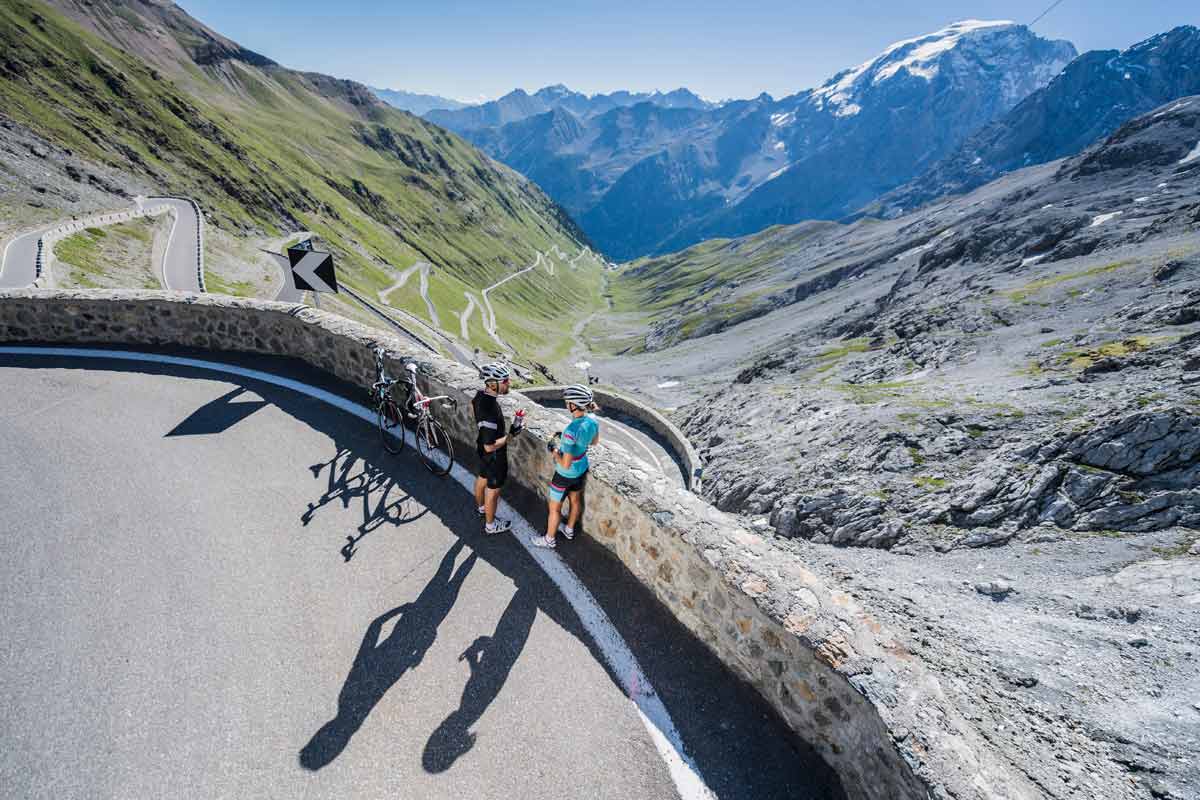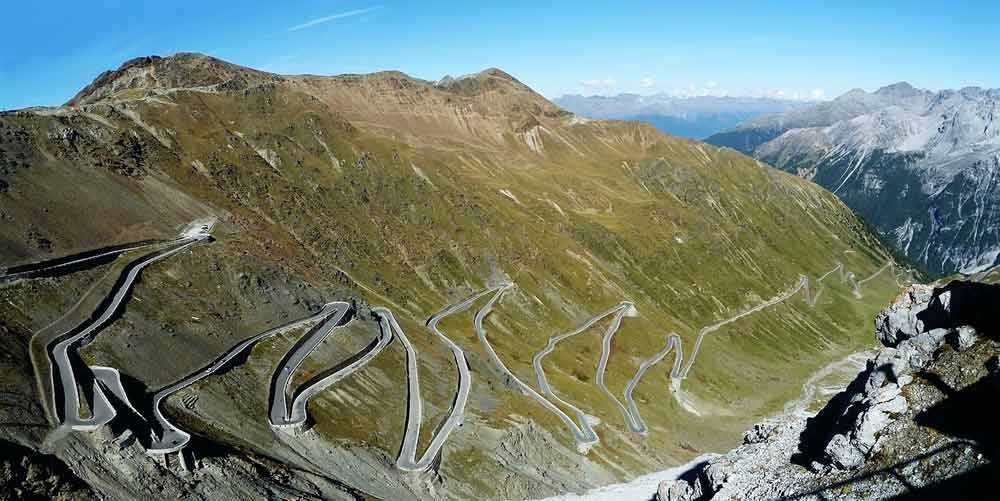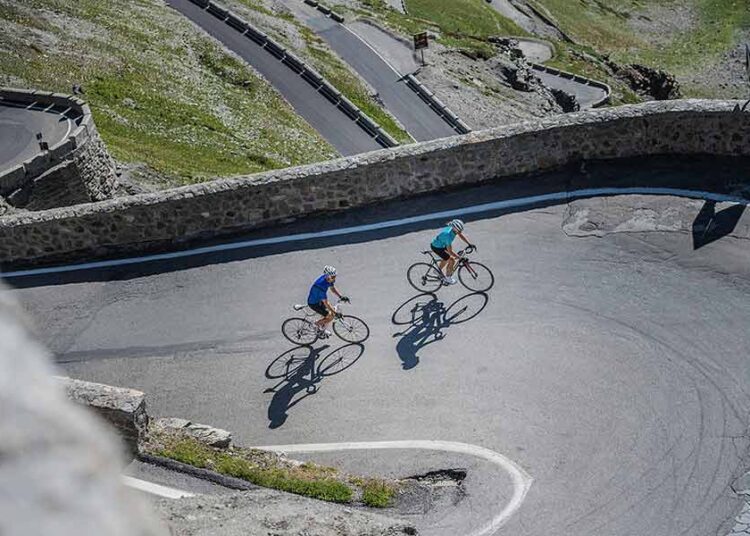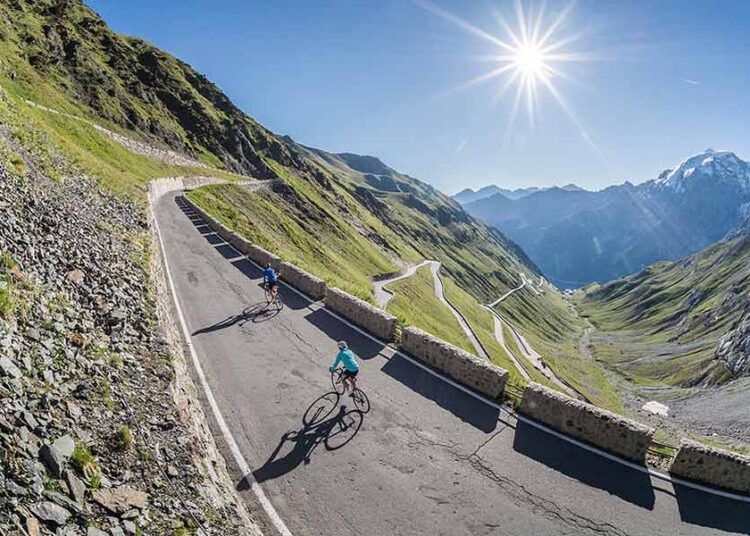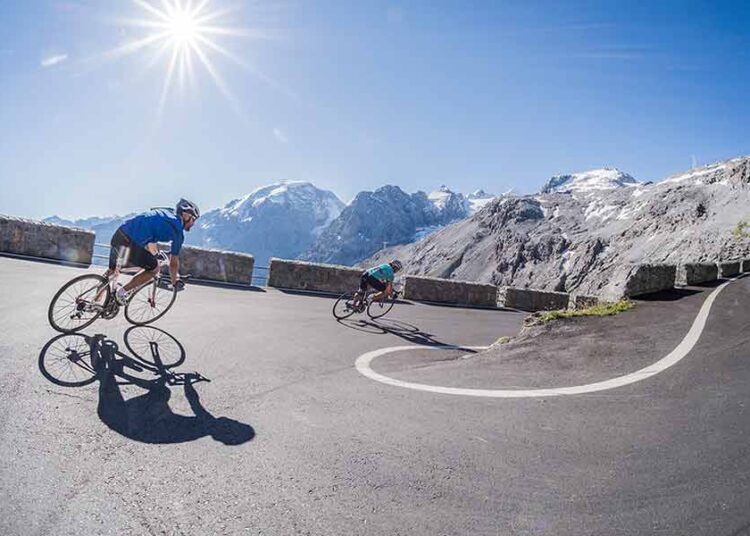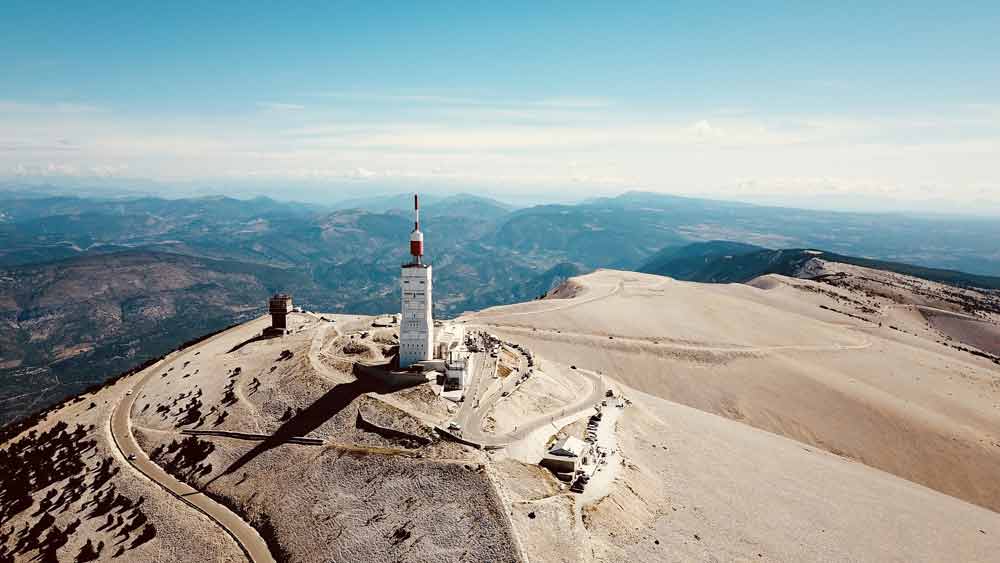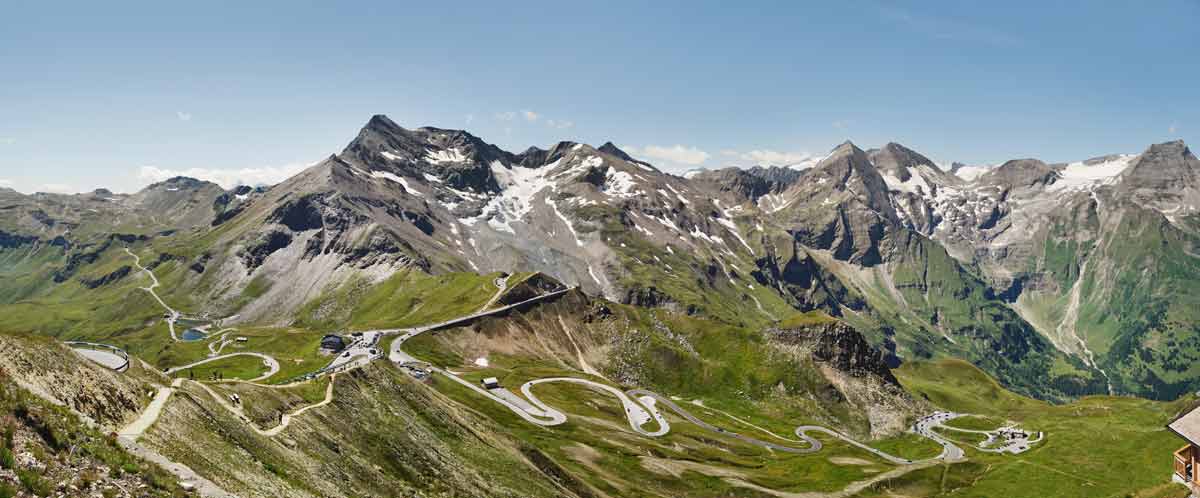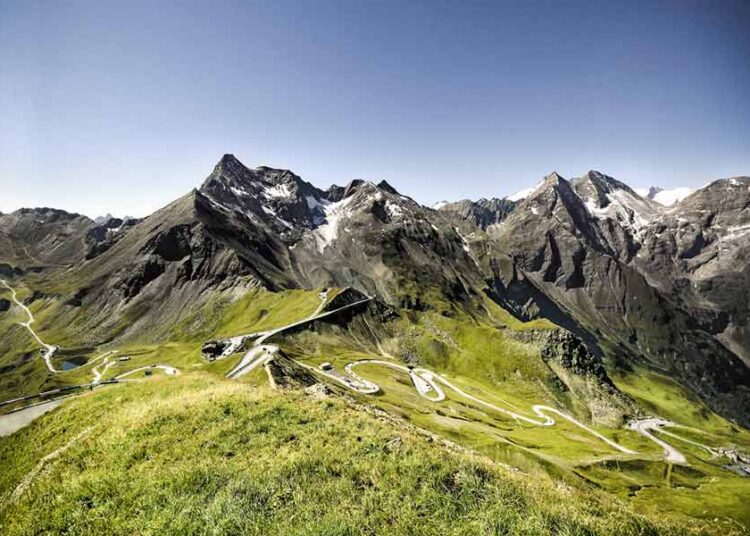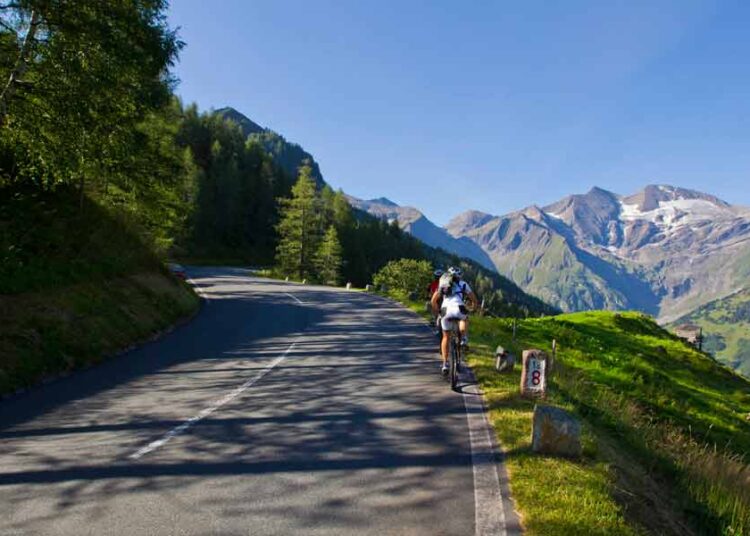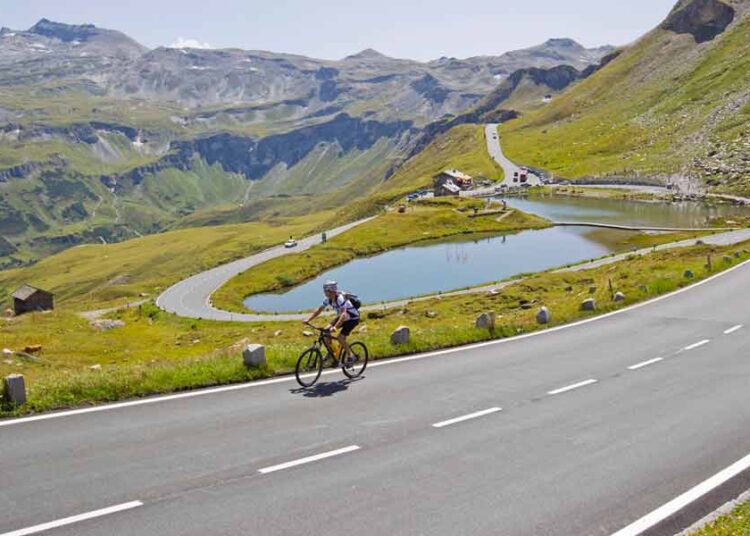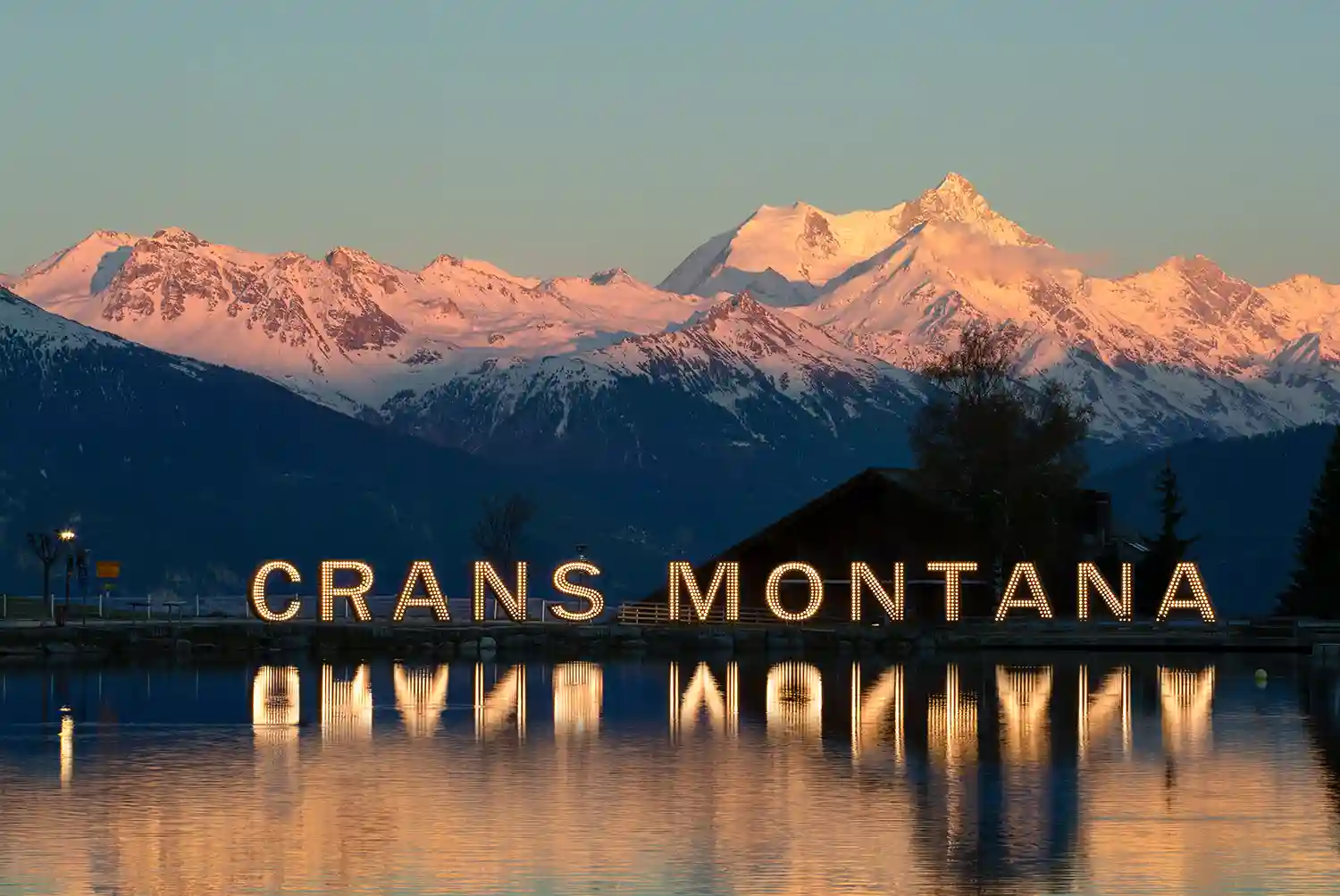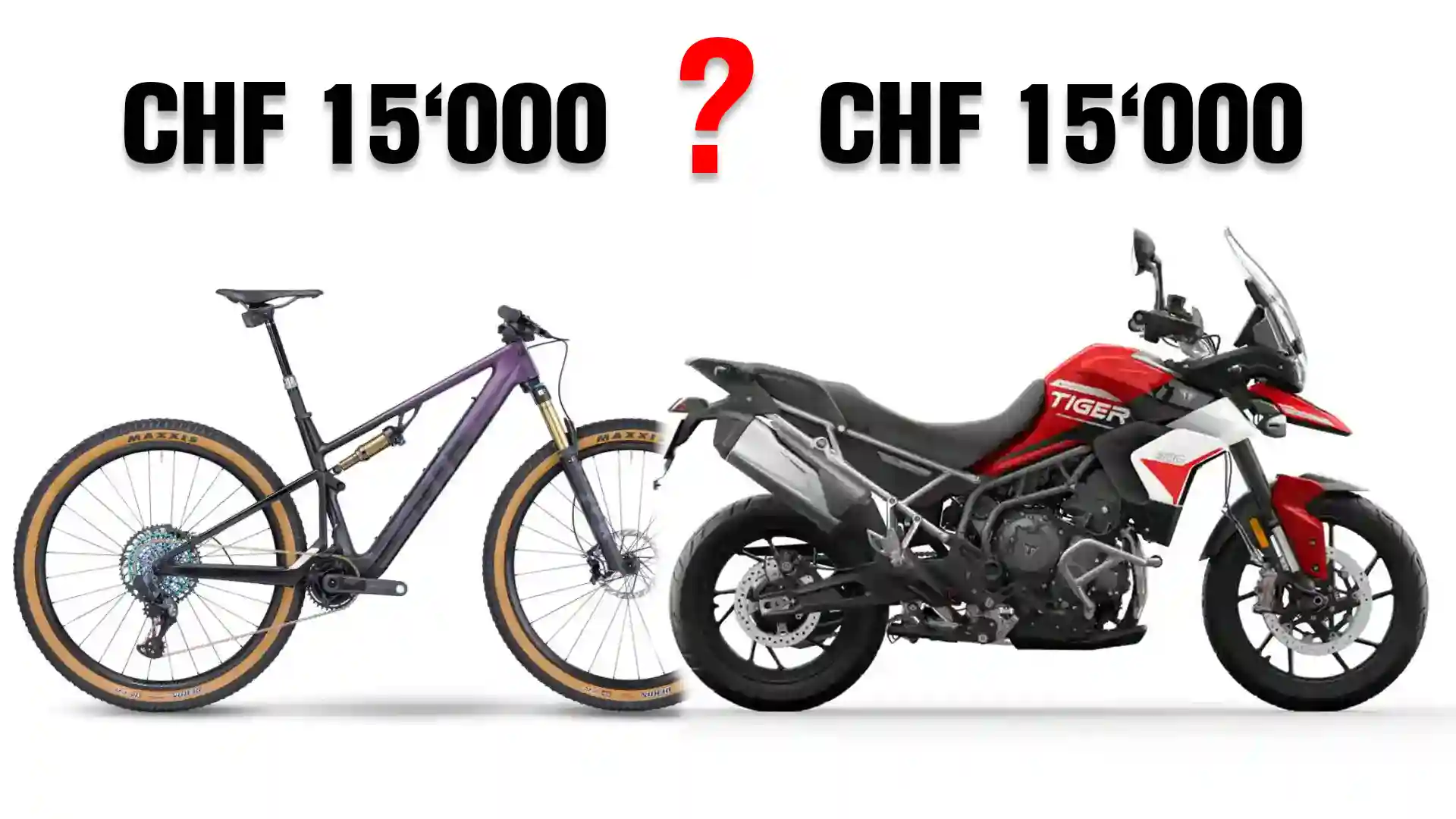Anyone who has ever taken a tour with their bike over an Alpine pass usually raves about this impressive experience for a very long time and wants to cross the next pass as soon as possible. In Germany, Austria, Italy, France, Slovenia and Switzerland there are numerous possibilities for this and often it is not so easy to make a decision which tour it should be the next time. That's why we've put together 7 must-see Alpine passes for your personal bucket list.
Alpine pass #1: Stelvio Pass
The Stelvio Pass is a popular destination for ambitious bikers, especially on sunny days in spring and autumn. Whoever tackles this ascent should also the right road bike have for it in his garage. Because the tour is quite demanding.
The classic route that most riders opt for leads from Bonding to the Stelvio Pass. However, a good alternative is also the ascent from the south side in Bormio or via the Umbrail Pass in the north.
The most famous section of the route starts at 2,187 meters in altitude at Franzenshöhe. From there, there are still 24 hairpin bends to overcome to the finish point, which is 570 meters higher. In total, the route has a length of 28 kilometers and an altitude difference of 1,870 meters. The steepest gradient on the route is 15 percent.
Alpine pass #2: Mont Ventoux
Those who regularly use the Tour de France who also knows that the ride over Mont Ventoux is one of the most famous stages. Due to the barren landscape in the upper regions, it is often dubbed the ride to the moon.
The strong sun and the fiercely blowing mistral can be particularly hard on drivers. That's why it's especially important here, The appropriate cycling clothing for the weather to have at your disposal.
The ascent on the south side leads through a sparse forest at the beginning. The last few kilometers the tour then goes through the classic lunar landscape. The reward is on the one hand a unique view over Provence and on the other hand the descent to Malaucéne over a fairly new asphalt surface.
The tour has a length of 22 kilometers, on which it is necessary to overcome a total of 1,634 meters of altitude with gradients of up to 15 percent up to the altitude of 1,909 meters.
Alpine pass #3: Col de l'Iseran
Val d'Isere is known mainly to fans of ski racing. However, the town is also the starting point of this pass crossing. This tour is popular mainly because of the magnificent view. On the other hand, it is notorious on the south side due to the lack of edge barriers, which make the ride an exercise in concentration.
With a total altitude of 2,770 meters, the Col de l'Iseran is the second highest pass in the Alps. The pass crossing has a length of 16 kilometers, on which gradients of up to 11 percent and a total of 930 meters in altitude must be overcome.
Alpine pass #4: St. Gotthard
It is possible to cross the St. Gotthard via the new federal road. However, this is not recommended due to the volume of traffic. In addition, the route here is quite monotonous.
A unique experience, on the other hand, is the ascent via the classic route. This leads through the Val Tremola. The special thing about it is that cyclists will not find a beautiful asphalt road here, but for the most part a cobblestone route. However, this is hardly used by cars and therefore offers a unique atmosphere on the 24 serpentines.
The tour has a total length of 14 kilometers. Up to the absolute height of 2,108 meters, a difference in altitude of 933 meters has to be overcome. The gradients are kept within limits compared to other passes. The highest gradient is about 10 percent.
Alpine pass #5: Vrsic pass
Slovenia is a real insider tip for spectacular pass crossings by bike. Especially the lonely roads in the varied landscape make the ride over the Vrsic Pass an unforgettable experience for cyclists.
With a distance of 33 kilometers, it is one of the longest pass crossings. The highest point here is "only" 1,611 meters. But since the start is at a low altitude, there are a total of 1,128 meters in altitude with some steep inclines of up to 14 percent.
Those who want it to be particularly pristine should opt for the 27 hairpin bends on the north side over cobblestones. The descent ends in the village of Kranjska Gora, one of the most famous Slovenian ski resorts.
Alpine pass #6: Grossglockner
At 3,798 meters, the Grossglockner is the highest mountain in Austria and is particularly popular with motorists because of the Grossglockner High Alpine Road a very popular destination.
However, the mountain is also very popular with cyclists. Most of them choose the tour via the north side of Bruck. The Glockner is considered one of the toughest climbs for cyclists in the Alps. This is due to the fact that the gradient rises to about 12 percent at kilometer 10 and does not let up thereafter.
The unique view is the reward for the arduous ascent. Although there is always a lot of traffic here, there is enough space for bikers due to the well-built road.
The tour covers a total of 1,749 meters in altitude over a distance of 33 kilometers, until finally reaching the highest point at 2,506 meters.
Alpine pass #7: Zoncolan
We have saved a special challenge for the end. The tour is only 13 kilometers long, but up to the absolute altitude of 1,750 meters there are gradients of up to 22 percent to overcome. To start here, you should have completed a few demanding tours in the mountains beforehand.
Those who start the journey via the east side will not notice much of the strain on the first 10 kilometers. Because up to the village of Zoncolan the roads are well developed and the gradient is between 7 and 10 percent. The "pleasure" starts only from here and leads partly over ski slopes and alpine pastures up to the Sella Monte Zoncolan.

